If you travel around Southeast Asia these days, it’s hard to avoid the souvenir peddlers hawking bootleg copies of famous literary works about whatever country you happen to be in. In Ho Chi Minh City, every five minutes somebody is sticking Graham Greene’s The Quiet American and Tim O’Brien’s The Things They Carried in your face. In Cambodia, eight-year-old kids walk around with backpacks full of Khmer Rouge horror for sale: A Cambodian Prison Portrait, First They Killed My Father, Cambodia Year Zero, Voices from S-21, and other books that make for fine beach reading in Sihanoukville. And in Myanmar, where I just spent a (mostly terrific) month, one book dominates this suddenly trendy section of the Banana Pancake Trail—George Orwell’s 1934 debut novel Burmese Days.
I downloaded Burmese Days on my Kindle back in Korea before I left, before I realized it was a certifiable “thing you’re supposed to do” as a tourist in Myanmar. I was actually rather excited about doing a bit of Orwell-related sight-seeing. Orwell served for five years as a policeman in various locales around colonial Burma from 1922 to 1927 (he was known then as Eric Blair—Orwell was his later pen-name). The novel, of course, drew heavily on his own experiences there, as did the seminal, much anthologized essays “Shooting an Elephant” and “A Hanging.” Like most Orwell fans, I got into his work as a teenager by reading his two bleak yet compelling primers on totalitarianism, Animal Farm and 1984, books it’s still hard to escape an American high school without reading. Later, as an AP English teacher in both American and Korea, I grew to appreciate Orwell for his beautifully flowing, descriptive, yet tightly controlled prose and the razor-sharp moral clarity of his politics—two things that beautifully come together in his essay “Politics and the English Language.”
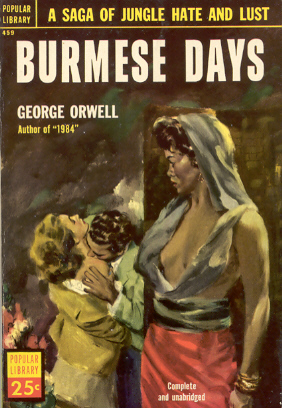 Our Myanmar itinerary didn’t include ground-zero for the Orwell freaks, Katha, a small town located a punishing twelve hours by train north of Mandalay. Katha was the real-life counterpart to the fictional Kyauktada, the town on the Irawaddy River that serves as the setting to Burmese Days. Apparently several buildings described in the novel still stand, including the British Club, scene of endless gin-and-tonics, card games and racist banter. However, I would get to see Mawlamyine—colonial Moulmein–the town where Orwell, as police chief, actually shot that elephant in the famous essay. I would also see Yangon–old Rangoon, the colonial capital–where Orwell probably spent a lot of time whoring.
Our Myanmar itinerary didn’t include ground-zero for the Orwell freaks, Katha, a small town located a punishing twelve hours by train north of Mandalay. Katha was the real-life counterpart to the fictional Kyauktada, the town on the Irawaddy River that serves as the setting to Burmese Days. Apparently several buildings described in the novel still stand, including the British Club, scene of endless gin-and-tonics, card games and racist banter. However, I would get to see Mawlamyine—colonial Moulmein–the town where Orwell, as police chief, actually shot that elephant in the famous essay. I would also see Yangon–old Rangoon, the colonial capital–where Orwell probably spent a lot of time whoring.
Beyond that, I was hoping Orwell’s general descriptions of the landscape, the flora and fauna, and the Burmese people still bore some resemblance to what I would be seeing almost 100 years after he was there. I wanted to feel some kind of connection with the man’s mind and pen here in modern-day Myanmar. This wasn’t as ridiculous a notion as it might seem. Those of us who have lived in Korea for 10+ years often see the passage of a decade render a neighborhood almost unrecognizable with all the balli-balli development. Then, how could anything in 2015 Myanmar resemble Orwell’s 1920s Burma? Ah, but you’re underestimating the power of a socialist military junta to retard progress! In Balkan Ghosts, historian / travel writer Robert Kaplan wryly called communism “the Great Preserver” of Eastern Europe during the Cold War. So too did General Ne Win and his band of vampiric cronies freeze their country in perpetual third-world misery, reviled by and isolated from the rest of the world from 1962 until just a few years ago.
But now, with the democratic reforms in 2011, including Nobel Peace Prize winner Aung Sang Suu Kyi ‘s release from twelve years of house arrest, it was suddenly PC to visit Myanmar. Foreign investment and tourist cash were pouring in, and “the canvas was growing dull,” to borrow another phrase of Kaplan’s. Myanmar was marching proudly into modernity, for good (free elections! freedom of speech! economic development!) and ill (deforestation! Chinese casinos!). Feburary 2015 seemed somehow almost like a last chance to see some bits of this place as George Orwell saw it.
and tourist cash were pouring in, and “the canvas was growing dull,” to borrow another phrase of Kaplan’s. Myanmar was marching proudly into modernity, for good (free elections! freedom of speech! economic development!) and ill (deforestation! Chinese casinos!). Feburary 2015 seemed somehow almost like a last chance to see some bits of this place as George Orwell saw it.
Little bursts of recognition from the novel popped up the entire trip. Of course, there was the betel leaf and nut chewing, and spitting. I saw, in Orwell’s words, “lips stained redder than blood by betel juice” and Burmese bending to “spit out scarlet mouthfuls of betel,” and the floors, paths, roads and sidewalks “much splashed by lime and betel juice.” Chewing betel leaves is alive and well in modern Myanmar, I can atte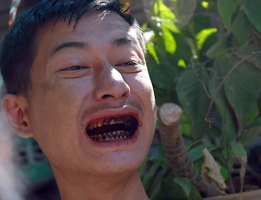 st to. My travel companion David, who had sampled betel-chewing last year in Bangladesh, gave the Myanmar version a try, and pronounced it sweeter and overall more pleasant than the Bengalis’ concoction. Expect him to start a “Betel Afficianado” blog soon! After booking a domestic Air Bagan flight from a betel-chewing travel agent, my other travel-mate, fellow Sweet Pickles & Corn scribe Eli Toast, remarked, “For fuck’s sake, how do you expect to be taken seriously as an adult when it looks like you’ve got a whole pack of Twizzlers in your mouth?”
st to. My travel companion David, who had sampled betel-chewing last year in Bangladesh, gave the Myanmar version a try, and pronounced it sweeter and overall more pleasant than the Bengalis’ concoction. Expect him to start a “Betel Afficianado” blog soon! After booking a domestic Air Bagan flight from a betel-chewing travel agent, my other travel-mate, fellow Sweet Pickles & Corn scribe Eli Toast, remarked, “For fuck’s sake, how do you expect to be taken seriously as an adult when it looks like you’ve got a whole pack of Twizzlers in your mouth?”
As for the local wildlife, David and Eli were both passionate bird-watchers, and made several sightings of these small, almost flourescent green-breasted birds with long, thin beaks. David promptly ID’d them as “bee-eaters.” Lo and behold, a few days later, on the bumpy train down to Yangon, I read the following lovely passage in Burmese Days:
Flory went outside and loitered down the compound, poking weeds into the ground with his stick. At that hour there were beautiful faint colours in everything—tender green of leaves, pinkish brown of earth and tree-trunks—like aquarelle washes that would vanish in the later glare. Down on the maidan flights of small, low-flying brown doves chased one another to and fro, and bee-eaters, emerald green, curvetted like slow swallows. 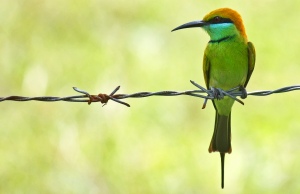 And speaking of that bumpy train ride, the novel describes a train journey from Yangon up to Katha as follows:
And speaking of that bumpy train ride, the novel describes a train journey from Yangon up to Katha as follows:
The train, fuelled with wood, crawled at twelve miles an hour across a vast, parched plain, bounded at its remote edges of blue rings of hills. White egrets stood poised, motionless, like herons, and piles of drying chilis gleamed crimson in the sun. Sometimes a white pagoda rose from the plain like the breast of supine giantess. The early tropic night settled down , and the train jolted on, slowly, stopping at little stations where barbaric yells sounded from the darkness. . . The train plunged into forest, and unseen branches brushed against the windows.
We must have been on those exact same tracks, taking the trip in reverse, from Bagan down to Yangon. And when I say “exact same tracks,” I mean that 100% literally—I don’t think they’ve done 100 kyat worth of maintenance on the tracks since Orwell wrote that passage. I think some of my dental fillings came loose on some of the roughest stretches. The only thing that made sleep possible in those 17 hours of shake-rattle- and-roll were double-doses of Xanax, purchased from a shady street vendor in Bangkok. Ah, sweet, sweet, Bangkok street-Xanax!
Mawlamyine—Orwell’s elephant-shooting locale— was a lovely little city hugging the Thanlwin River right before it emptied into the Bay of Bengal. It didn’t offer up much in terms of Orwell lore. When we got to our hotel, a quick check of the famous essay on the internet revealed that he had actually done the deed in some village outside of town. Some historians allege that it never even happened (at least not with Orwell as its central character). What—did I expect a big bronze statue in the central square, with Police Chief Blair sticking the wide-bore muzzle of his .585 rifle in the ear of the almost dead, bullet-riddled elephant, about to turn the poor creature’s brains into a prismatic spray? Well, kind of, yeah. A plaque, a marker, anything. Yes, he was your colonial oppressor, but at least he knew he was, and wrote as much years later. But no. No Orwell statue or memorial plaque. There probably should have been one for the elephant, which would have been a nice little “fuck you” to the British.
The biggest zap of recognition came during our two-day jungle trek outside of Kalaw. It involved Myanmese women. Now, before I continue, let me say that trying to describe the women of a particular country or ethnic group is difficult, if not impossible. The nature of the task requires a delicate tip-toe through the minefield of generalization. You risk vagueness, cliché and inaccuracy at best, sexism and racism at worst. Even attempting it, a writer, especially a male writer, can easily fall into the trap of lookism—defining women only by their appearance, not by intelligence, personality, ability, or talent. The political correctness refs are calling a tight game these days, which on balance is a good thing. By all means we should judge women, to paraphrase MLK, by the content of their character, not by the smoothness of their skin or the perfection of their “S” line. Also, in Myanmar, I was nothing more than a tourist for a little over three weeks. I looked, I watched, I observed. I did meet and have some very pleasant conversations with some Burmese. However,I didn’t come close to digging deep enough to attempt writerly insight into the hearts and souls of the women (or men) of Myanmar. My impressions here are strictly that of a tourist, someone just passing through with a backpack and a Lonely Planet, probably equally interested in finding the next cold Myanmar Lager on a hot, dusty afternoon as he was in experiencing Burmese culure. So, with that said, here, from my lofty, privileged perch, are my observations.
Well, I thought Burmese women were beautiful. Tiny—probably the shortest and most petite of any Asian country I’ve visited. The men, too. A function of average GDP and therefore nutrition? Perhaps, yet unlike what I’ve heard about North Korea, people didn’t look underfed or malnourished or stunted at all. They looked healthy, by and large, just really small. Delicate, yet not weak-looking. Actually, your average leggy, gorgeous 5’8” Gangnam K-pop trainee seems more fragile than a 5’0” 85-pound young village woman in Myanmar. The skin—coffee-colored? Mocha? A creamy light brown? Here, I’ll defer to Orwell, who describes the face of Ma Hla May, John Flory’s 22 year-old mistress in Burmese Days as “the color of new copper .” In fact, I’ll just give you Orwell’s full description from the first appearance of Hla May:
Ma Hla May was a woman of twenty-two or –three, and perhaps five feet tall. She was dressed in a longyi of pale blue embroidered Chinese satin, and a starched white muslin ingyi on which several gold lockets hung. Her hair was coiled in a tight black cylinder like ebony, and decorated with jasmine flowers. Her tiny, straight, slender body was as contourless as a bas-relief carved upon a tree. She was like a doll, with her oval, still face the colour of new copper, and her narrow eyes; and outlandish doll and yet a grotesquely beautiful one. A scent of sandalwood and coco-nut oil came into the room with her
lockets hung. Her hair was coiled in a tight black cylinder like ebony, and decorated with jasmine flowers. Her tiny, straight, slender body was as contourless as a bas-relief carved upon a tree. She was like a doll, with her oval, still face the colour of new copper, and her narrow eyes; and outlandish doll and yet a grotesquely beautiful one. A scent of sandalwood and coco-nut oil came into the room with her
Strangely, Orwell never mentions the ubiquitous Thanaka wood paste that most women from big cities to tiny villages smear on their cheeks and forehead as a cosmetic / sun cream. This is probably the first thing that strikes tourists about Burmese women. It’s a centuries-old custom, yet it never pops up in Orwell’s writings on Burma.
As I said, my sharpest memory involving women came during our trek outside of Kalaw, an old British hill station near Inle Lake. Our guide was Montay, a thin, wiry, tough-as-shoe-leather Nepalese whose grandfather had been a Royal Gurkha soldier in World War II. On the first day, we tromped about 25 km, up and down two mountains, and at about 5 pm we staggered into the village where we were to spend the night. We were dog-tired, our legs a few notches beyond sore. The village was like a movie set of a perfect little jungle or mountain tribal village. There was a small cluster of bamboo huts raised on wooded stilts; pigs, chickens and water buffaloes wandering up and down the packed mud paths, wood smoke from cooking fires, women and men coming in the from neighboring hills and valleys where they grew tea, yams, corn, lentils, chilis, mangoes, and collected mushrooms. (No opium poppies anymore, Montay informed us. The government had stamped that out in this area about ten years ago, which was too bad, Montay added, because he liked to skim a little raw opium from the scored bulbs and get high.)
Despite the eradication of the crazy-lucrative opium, this seemed like a prosperous village. It had about 25 families, maybe about 120 people. We saw lots of small children (who mostly stared at us, dumbstruck). There were lots of livestock. People seemed well-fed and well-clothed. The hut we were staying in was rather spacious. It had two large communal rooms a third room as a kitchen. They had rigged up solar panels that were connected to a TV with a satellite dish. (This wasn’t such a surprise—the Lonely Planet mentioned TV was fairly common in many of these tiny villages.) After drinking a few cups of revivifying tea and rubbing our aching quads and calves, we were bidden to go wash up for dinner. We went over to the well, where large wooden troughs of water were stored for all the washing and cleaning needs of the village. There was a small group of maybe five or six villagers washing as well, the men stripped down to skivvies, the women wearing a bosom-to-knee wrap as they soaped up, scrubbed, and washed themselves off with bowls of water. We surely got some odd looks and giggles, but the three of us coming upon the evening wash-up didn’t seem such a big deal. While our trek wasn’t as popular as the daily Kalaw-to-Inle Lake mob-scene trek, Montay said he brought about one or two groups through here every month. The villagers seemed fairly used to big, tall whities on the premises, even if the kids still seemed a little freaked out.
As we awkwardly washed our faces and hands, we couldn’t help but noticing one of the women washing herself among us. She was young and beautiful, probably in her early twenties. Her long hair was tied up in loose bun, and the soaked brown cloth wrap clung to her body, revealing her curves. We were only 20 minutes or so from sunset, and the sun’s long red rays picked through the dense forestry, illuminating the whole scene with a soft, magical glow. Her wet, smooth, perfect light- brown skin glistened in the dusk—just like new copper, as Orwell wrote. I can’t use any other word here: she was glistening. A glistening, exotic native beauty washing herself at sunset. We tried not to stare. There were other villagers there, including men. An older married woman with large breasts wobbling beneath her wrap playfully splashed water at us, laughing at our awkwardness and shyness, but we kept sneaking glances at the young bathing beauty. It was magnetic, a gravitational force dragging our eyes towards her. I can’t say it was erotic–that word somehow cheapens the memory. A better word is sensual: an epitome of female sensuality and beauty coupled with an epitome of exoticism. Later on the trip, at the touristy trinket shops in Bagan, we notes lots of cheap oil paintings and watercolors for sale, many of the depicting typical scenes of village life—including the scene that we were now witnessing: young women bathing themselves. Yeah, somebody else had noticed. Or at least somebody had noticed people like us noticing.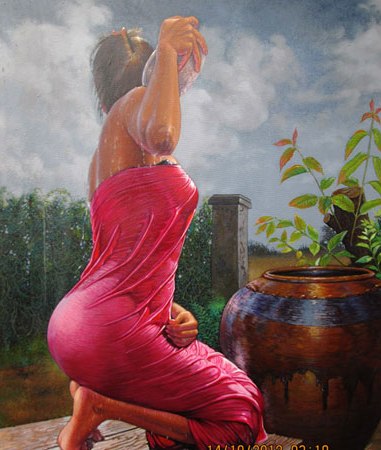 How many times had a scene like this taken place over the previous centuries, and in how many different countries, how many different continents? How many white men gazed, gawked, and ogled a young brown or black-skin woman, finding something basic, elemental and profound , an object (because of course it was, is, and always will be objectification) of perfect grace, beauty, exoticism, and eroticism? I thought of Orwell witnessing a similar sight. But I also thought of Gaughin and his Tahitian paintings, Joseph Conrad’s “Wild Woman” from Heart of Darkness, Charles Marion Russell’s “Keeoma” paintings of Native American women, and Gilbert and Sullivan’s “The Mikado.” Doing a little research, I came upon the term “Orientalism” which described art, music and literature mostly from 19th century Europe that focused on idealized Asian and Middle-Eastern subjects and themes. And boy, there was a lot of it. Were we “perving out” with that young woman bathing herself? Call it that if you must, but at that moment I felt firmly placed within hundreds–thousands of years even–of pervy tradition.
How many times had a scene like this taken place over the previous centuries, and in how many different countries, how many different continents? How many white men gazed, gawked, and ogled a young brown or black-skin woman, finding something basic, elemental and profound , an object (because of course it was, is, and always will be objectification) of perfect grace, beauty, exoticism, and eroticism? I thought of Orwell witnessing a similar sight. But I also thought of Gaughin and his Tahitian paintings, Joseph Conrad’s “Wild Woman” from Heart of Darkness, Charles Marion Russell’s “Keeoma” paintings of Native American women, and Gilbert and Sullivan’s “The Mikado.” Doing a little research, I came upon the term “Orientalism” which described art, music and literature mostly from 19th century Europe that focused on idealized Asian and Middle-Eastern subjects and themes. And boy, there was a lot of it. Were we “perving out” with that young woman bathing herself? Call it that if you must, but at that moment I felt firmly placed within hundreds–thousands of years even–of pervy tradition.
However, while I could feel that connection stretching back through the centuries, I knew, of course, there was a huge difference between being here as visiting guests and Orwell being here as a representative of imperialism. Orwell knew he was an agent of domination, subjugation, and exploitation—“despotism with theft as its final object” as John Flory, clearly a cipher for Orwell himself, thinks. That Orwell could perceive and understood the contradictions of colonialism with such clear-sightedness while standing in its midst is still startling today. In “Shooting and Elephant” he writes (not filtered through any fictional mouthpiece this time): “I had already made up my mind that imperialism was an evil thing and the sooner I chucked up my job and got out of it the better . . . the British Raj [was] an unbreakable tyranny, as something clamped down . . .upon the will of prostrate peoples.” Orwell, by virture of being British, was a pukka sahib—a most honorable, first-class gentleman, though he knew he was anything but. In the novel, Flory purchased Ma Hla May for 300 rupees from a dirt-poor Burmese family. When he falls in love with a young visiting Englishwoman, he gives Hla May 50 more rupees and tells her to scram. She was disposable to him, nothing more than a long-time whore. The scenes with her are among the book’s most powerful and excruciating.
Yes, David, Eli and I were not imperialists “fortifying their dullness behind a quarter of a million bayonets.” However, were we just imperialists of a different sort? I can’t blithely dismiss the staggering disparity in wealth between the people in that village and the three of us. Sure, it would have been absurd, insane even, for one of us to even think of “buying” a young native woman from this village to be a “mistress.” And yet, we began and ended our trip in Bangkok, a city where plenty of flesh gets purchased pretty much 24/7/365, quite a lot of it by white Westerners. Even back in Korea, I know a few ex-pats who have brought back, er, companionship from Thailand or the Philippines on a long-term basis.
I mentioned that it seemed like a prosperous village. The house we stayed at had solar-cell electricity that they used mostly for lighting up the disco-style lights that adorned their Hindu mini-shrine, and for TV. After we ate dinner, the whole extended family, about 10 people, from babies to grandmothers, came in and fired up the ol’ boob tube, watching some modern Burmese drama clearly set in the big city of Yangon or Mandalay. We watched with them for awhile until the grotesque sight of our starched white, bearded faces in the TV glow made a baby cry, and we retired to the next room, where we dropped off to sleep like dropping off a cliff, zonked by about 9 p.m.
I would like to spout the cliché that these simple people seemed content in their simple lives, but reality is more complex than that. I wish I’d asked Montay if, or how often, a young person left this village behind to try to forge a life in Kalaw with its 10,000 people about 25 km away, or perhaps Taungyi, the Shan State capital with a population of about 350,000. It more than likely happened. After all, they were not some primitive “uncontacted” Amazon tribe. Our guide Montay was a connection to Kalaw. Some from this village probably made trips there now and again for supplies they couldn’t make or grow themselves. Of course, the trekkers coming through here every month, with their hiking boots and backpacks costing unimaginable sums, were totems of the rich Western world. And then there was TV. I saw how transfixed they were by the images of middle-class or wealthy Burmese from Yangon or Mandalay. As they were flipping through channels (yes, these villagers were channel surfing), we saw snippets of . . . Korean dramas! Good lord, what they must have thought of all those sculpted (literally) faces, expensive clothes, furniture, and cars? Could it be that that young beautiful woman, bathing in the twilight, saw those flickering images on the screen, or saw those European or American or Australian trekkers passing through her village, and never wondered what life would be like in Kalaw, Taungyi or Mandalay, or Paris, Geneva, San Francisco or London? Did she ever look at one of us and think, Take me with you?
Back in 2009, I did a 3-day trek in Xishuangbanna, Yunnan province in far-Southern China, along the Laos / Myanmar border. Our tour guide, the very young and pretty Sing-la, was from a Be-lan mountain village. She had learned English down in the city of Jinghong, and married a young, handsome French guy whom we met after our trek. She was now probably the chief earner (at least in terms of hard currency) for her village. (You can read more about Sing-la in The Worst Motorcycle in Laos, the latest book by Mr. Motgol!) Could that same relationship happen in the Myanmar village David, Eli and I trekked through? Who knows? Why not? Like any marriage, there’s no guarantee it would work out, but at least there were no longer any John Florys to buy that beautiful young village woman for a pittance from her parents, only to throw her out like an old newspaper when he saw a proper Englishwoman to chase.
Orwell despised what colonialism was doing to its subjects and what it was doing to his own soul. However, he was under no illusions that what would come next would be any better. In a much-quoted line from “Shooting an Elephant,” he admits that the British Empire was “a great deal better than the younger empires that are going to supplant it.” Looking back at the staggering misrule by Burma’s own rulers after independence, once again Orwell seems to have had his finger firmly on the throbbing pulse of history. Myanmar is still being economically exploited by her own rulers, and by her larger, richer, more populous and powerful neighbors. Of that, there’s no doubt. However, in our quick look about the place in 2015, with the tourists beginning to stream in en masse, with free elections coming later this year, there’s also no doubt it’s getting better. At last, I can imagine Orwell thinking. At last.


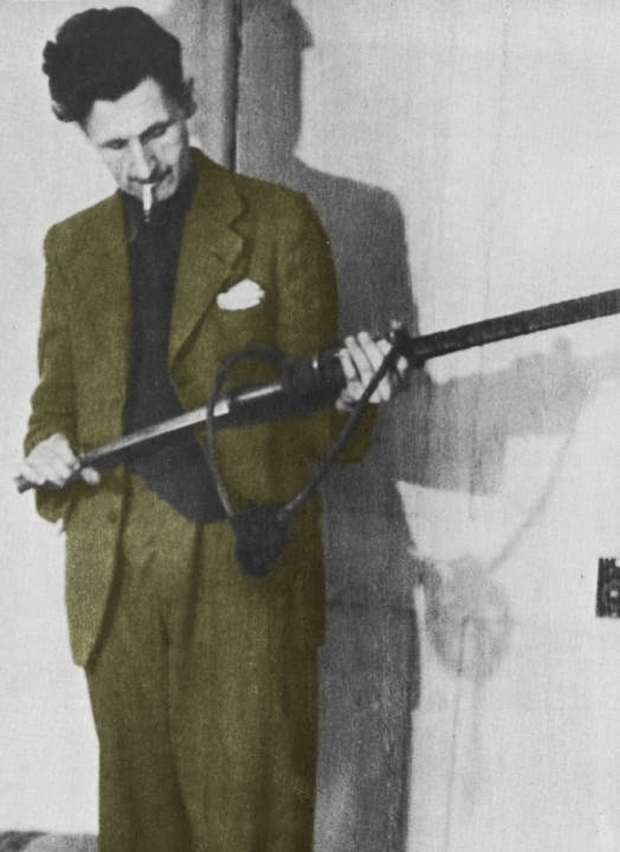
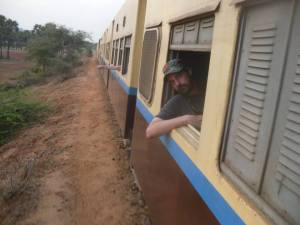
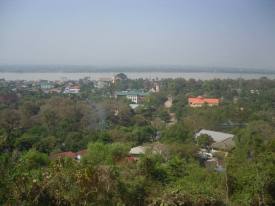
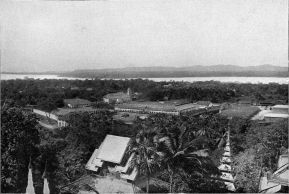
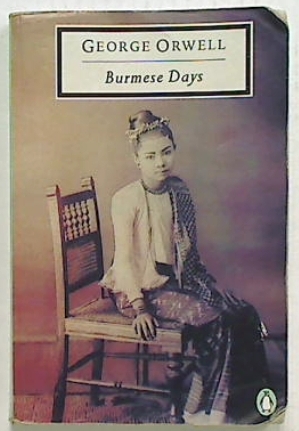
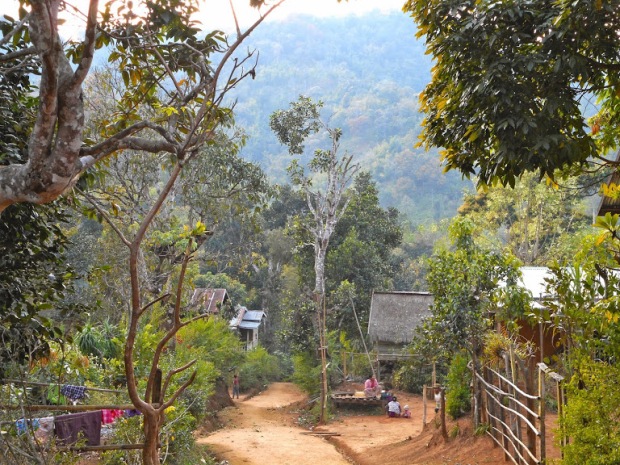
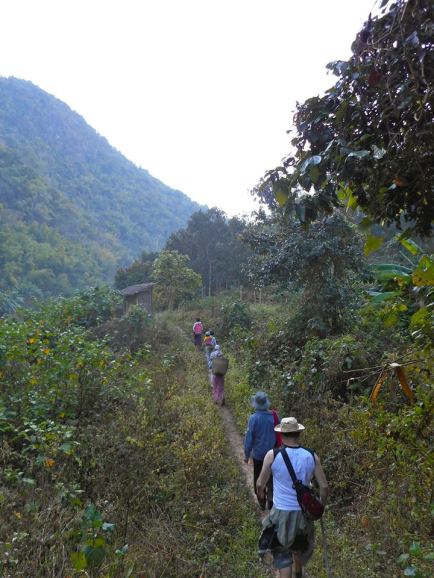
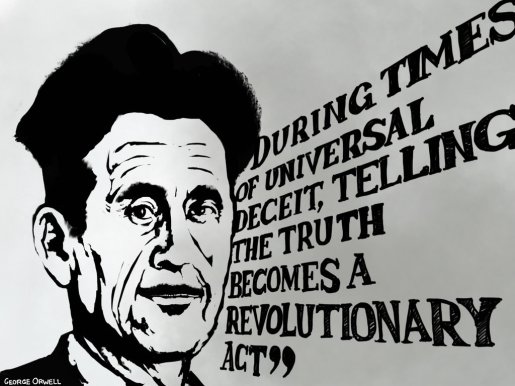
Recent comments